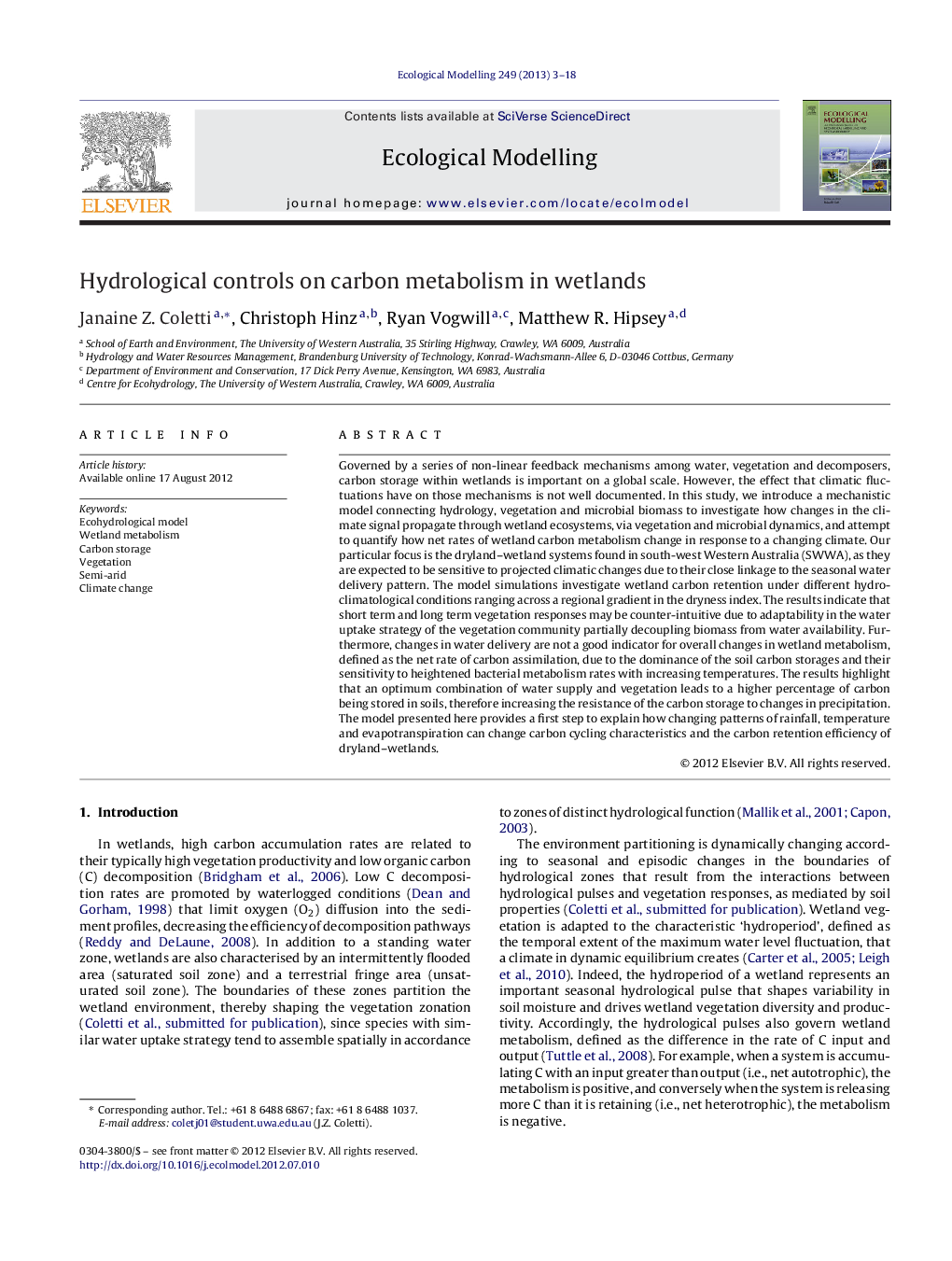| Article ID | Journal | Published Year | Pages | File Type |
|---|---|---|---|---|
| 4376271 | Ecological Modelling | 2013 | 16 Pages |
Governed by a series of non-linear feedback mechanisms among water, vegetation and decomposers, carbon storage within wetlands is important on a global scale. However, the effect that climatic fluctuations have on those mechanisms is not well documented. In this study, we introduce a mechanistic model connecting hydrology, vegetation and microbial biomass to investigate how changes in the climate signal propagate through wetland ecosystems, via vegetation and microbial dynamics, and attempt to quantify how net rates of wetland carbon metabolism change in response to a changing climate. Our particular focus is the dryland–wetland systems found in south-west Western Australia (SWWA), as they are expected to be sensitive to projected climatic changes due to their close linkage to the seasonal water delivery pattern. The model simulations investigate wetland carbon retention under different hydro-climatological conditions ranging across a regional gradient in the dryness index. The results indicate that short term and long term vegetation responses may be counter-intuitive due to adaptability in the water uptake strategy of the vegetation community partially decoupling biomass from water availability. Furthermore, changes in water delivery are not a good indicator for overall changes in wetland metabolism, defined as the net rate of carbon assimilation, due to the dominance of the soil carbon storages and their sensitivity to heightened bacterial metabolism rates with increasing temperatures. The results highlight that an optimum combination of water supply and vegetation leads to a higher percentage of carbon being stored in soils, therefore increasing the resistance of the carbon storage to changes in precipitation. The model presented here provides a first step to explain how changing patterns of rainfall, temperature and evapotranspiration can change carbon cycling characteristics and the carbon retention efficiency of dryland–wetlands.
► Water availability defines the magnitude of the C fluxes in wetland environments. ► Water availability does not define the total amount of carbon stored by wetlands. ► Changes in water storage were not proportional to changes in C storage in wetlands. ► Wetlands exposed to a higher DI were more sensitive to a decline in precipitation.
